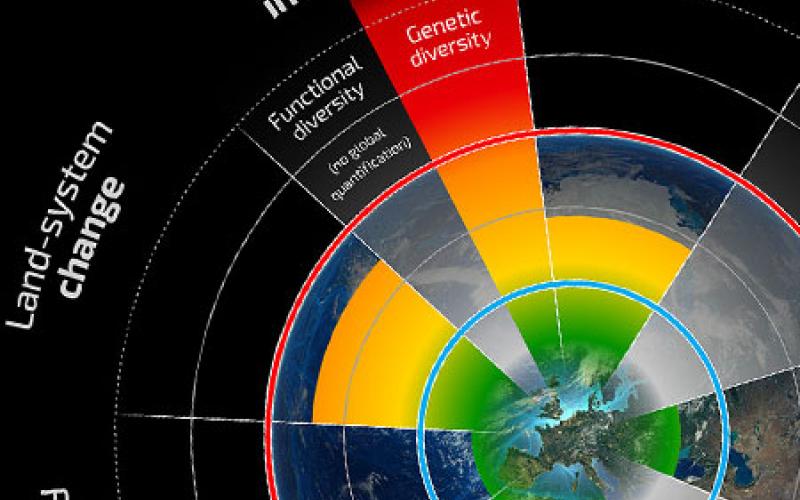Updating the ‘planetary boundaries’: A science-based approach to sustainable development

Updating the 'planetary boundaries': A science-based approach to sustainable development
In a recent paper, scientists refined the proposed concept of Earth Systems global thresholds, revising the nine defined Planetary Boundaries
Original Paper:
Steffen, W; K. Richardson; J. Rockstrom; S.E. Cornell; I. Fetzer; E. M. Bennett; R. Biggs; S. R. Carpenter; W. de Vries; C. A. de Wit; C. Folke; D. Gerten; J. Heinke; G. M. Mace; L. M. Persson; V. Ramanathan; B. Reyers; S. Sorlin. 2015. "Planetary Boundaries: guiding human development on a changing planet." Science. 347: 1259855-1 – 1259855-11. DOI: http://dx.doi.org/10.1126/science.1259855
The concept of planetary boundaries (PB) deals with the necessity of maintaining the stable conditions present in the Earth System (ES) along the last 11,700 years — the Holocene epoch — in order to keep humanity striving without causing system's disruption. The nine proposed boundaries, first defined by 28 international scientists in 2009, establish the components that regulate ES functioning, and in some cases, have identified a specific quantitative threshold which human development should avoid trespassing to continue operating in a safe space. The global scale imposes a great challenge on accounting for local level and regional differences in setting these boundaries, therefore the concept remains under continuous research.
In a recent article published in Science, a group of researchers, led by Will Steffen of Stockholm University, revises and updates the nine boundaries. Three of the boundaries remain essentially unchanged: climate change, stratospheric ozone depletion and ocean acidification. Now considering regional-level boundaries, and also globally aggregated boundaries, the biodiversity loss boundary was redefined as biosphere integrity; Biogeochemical flows of nitrogen and phosphorus, land-system change, and freshwater use were reframed into this new scope. For atmospheric aerosol loading they only can identify one regional boundary, relative to the south Asian monsoon. Lastly, the first called chemical pollution boundary, now is defined as novel identities, including not only substances but modified life forms that can incur in changes of ES state.
Assessing the interrelation between boundaries, they highlight the importance of climate change and biosphere integrity as "core" boundaries, regulating the overall functioning of the ES through the balances of energy and materials, and affecting the other boundaries altogether. In terms of the current state of transgressing boundaries, they propose four boundaries, instead of three; climate change, biosphere integrity, biogeochemical flows, and the new category land-system change.
In order to address the challenge of linking global and regional scales, the scientists focused in the five boundaries that present an important regional operating scale, which arebiosphere integrity, biogeochemical flows, land-system change, freshwater use, andatmospheric aerosol loading. Here they propose the development of a two-level set of control variables and boundaries. The units of analysis for these sub-global boundaries are not the same, and will depend basically on the role that boundary/process play within the ES. They present updates for these boundaries now containing the globally aggregated boundary value for each control variable, plus the regional distribution function.
Within some revised boundaries, climate change remains with the variables originally established — atmospheric CO2 concentration and radiative forcing. Biosphere integrity presents a two-component approach, where they gathered the concept of phylogenetic species variability together with a second concept of biodiversity loss at a global and biome ecosystem levels. Another boundary that underwent an important change is land-system change that now represents the control variable as the amount of forest cover remaining, instead of amount of croplands.
The authors claim the relevance of the PB framework as to guide policy and decision-makers seeking the sustainable development of every society. At the same time, they recall the PB concept as a scientific foundation for limits to human impacts on ES, not considering issues such as equity or economic prosperity. Nevertheless, the definition of a safe operating space within the PB scope will certainly be useful in driving more sustainable decisions for human activities.




